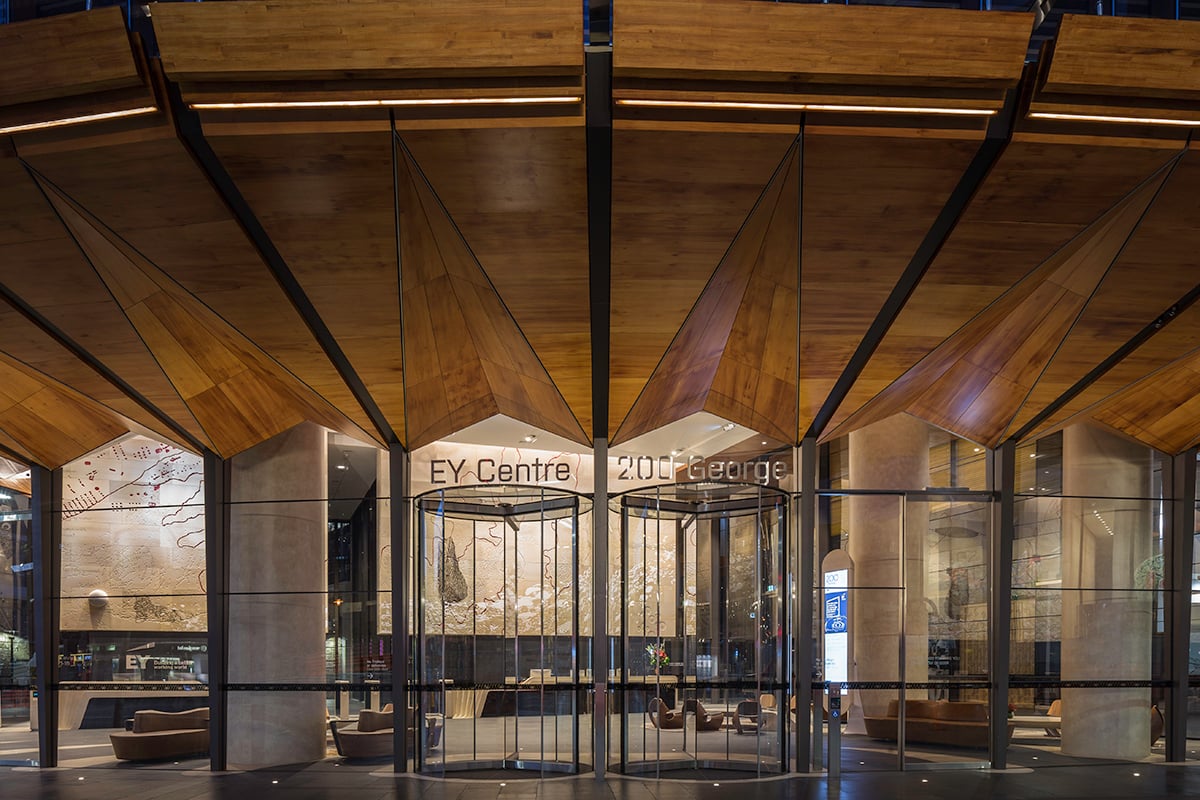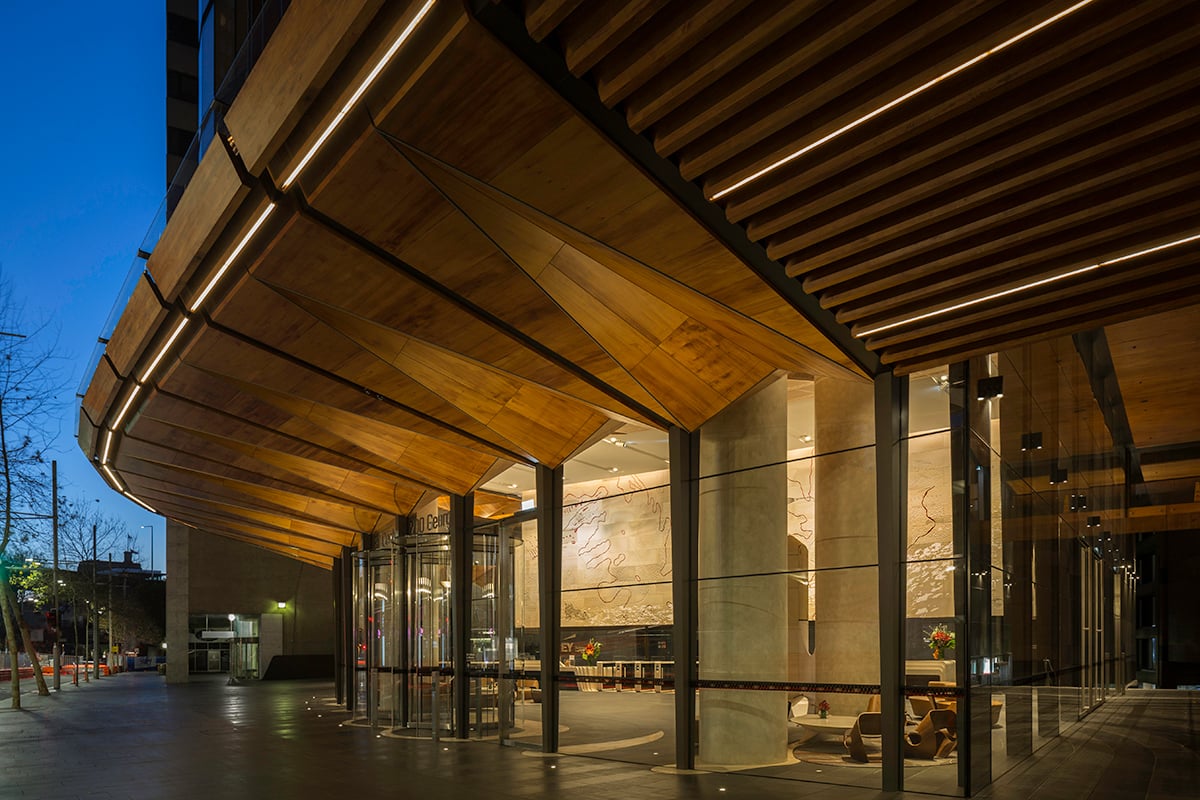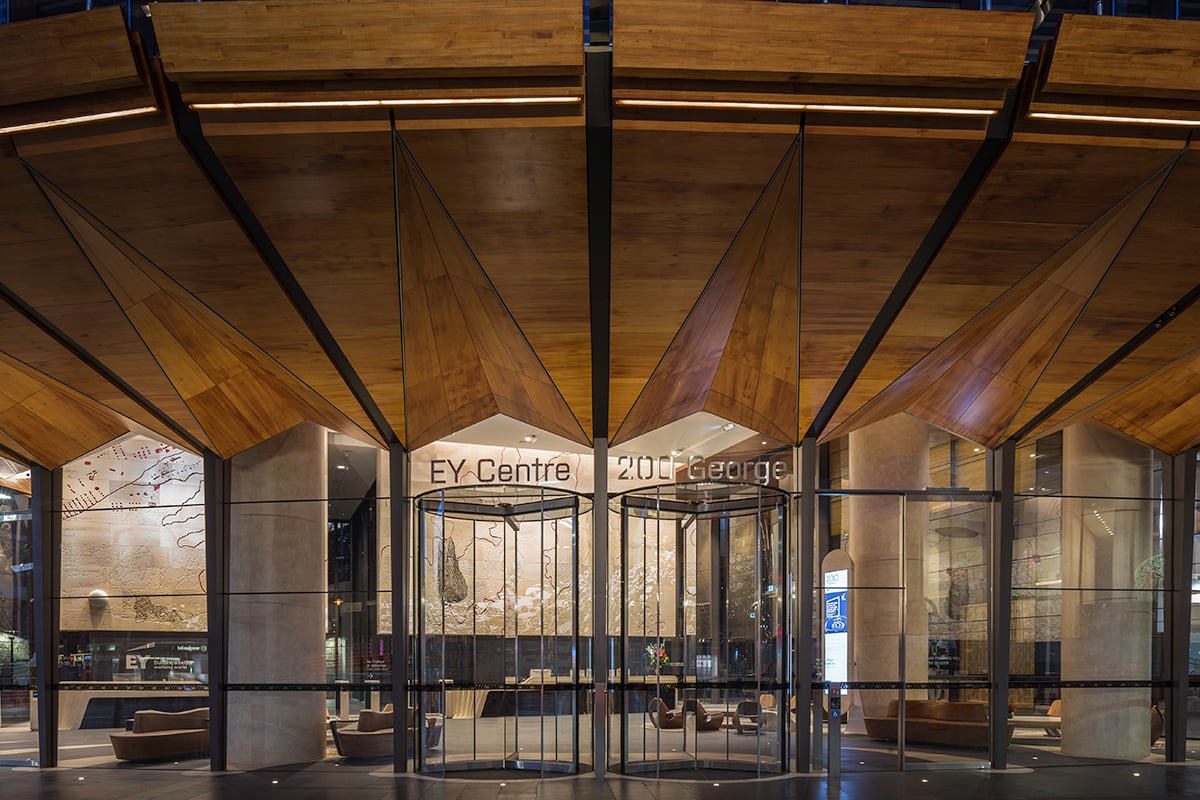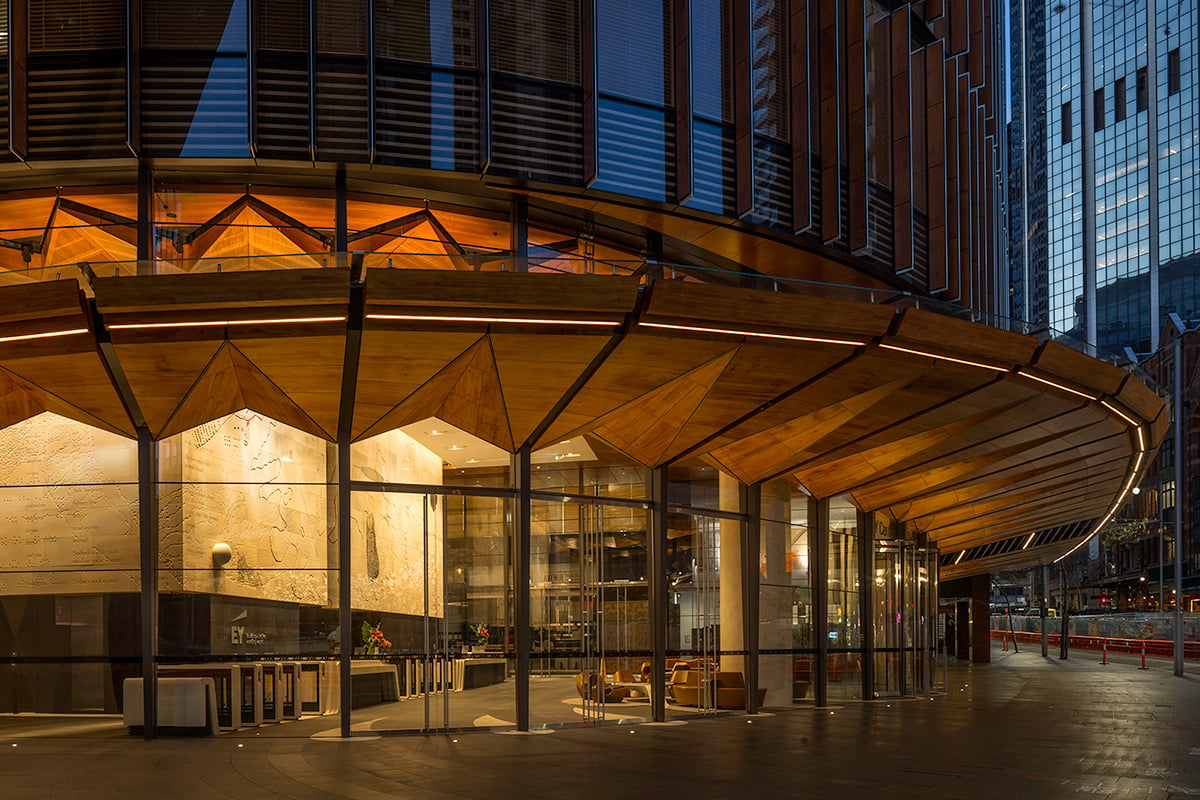
200 George Street's crowning glory
200 GEORGE STREET’S CROWNING GLORY
The office building at 200 George Street, known as the EY Centre, is one of Australia’s most environmentally advanced and sustainable buildings. Owned by Mirvac and designed by architects FJMT, the building has a grandly illuminated entrance and unique crown feature on its top. The lighting is an integral part of the overall design of the base building as well as the main entrance and exterior features, designed by Arup with equipment supplied by WE-EF sales partner, Light Culture. Mr Carter Leung was the lighting designer responsible for 200 George Street. He said that sustainability had been “given” throughout all aspects of the building, including its design and construction.
“We don't really talk about energy efficiency as an objective as it is just a given that it will be done. Since we’ve moved away from metal halide lighting it is expected that LED will be used in these type of projects,” he explained. Arup was involved in the lighting design of the building as a whole, from office areas to the public domain. “The brief at the beginning was to accentuate the architectural fabric of the building in order to make it a world-class building,” Mr Leung said.
The entrance and lobby of the building feature a striking timber design and a large artwork, “ngarunga nangama: calm water dream”, created by Ms Judy Watson in consultation with Gadigal Elder from Sydney, Uncle Allen Madden. The primary objective of the lighting design was to create a welcoming environment within the public domain of the building, accentuating the warm timber finishes and decluttering the open area with limited light sources, well integrated into the “building fabrics”.
“We wanted to highlight how rich the timber building material is,” Mr Leung explained, “and through the process we engaged a range of different suppliers”. “We were uplighting the timber awning along George Street, then we needed downlights for the back of the building and projectors to be used at the crown level as well as some luminaires at the carpark entrance,” he noted.
The lighting of 200 George Street earned Arup a Lighting Award of Commendation from the Illuminating Engineering Society of Australia and New Zealand (IESANZ) at its 2016 awards programme. The IESANZ judges remarked that ”this project’s layering of light from interior to exterior is well considered. The uplighting of the timber has brought warmth to the interior and accented the architectural features well, and the mural and artworks are beautifully lit”.
According to Mr Leung, it was a balancing act to light the entrance way awning without competing with the artwork that uses materials discovered during the excavation. “The artwork forms part of the streetscape – it sits in the ground floor lobby, so they wanted uplighting of the awning that didn't compete with it,” he said.
There were several further challenges in this project, one of which was balancing the needs of the client and the local government authority in relation to achieving the right lighting levels. A combination of uplighting and downlighting was used. “At that time, we were doing multiple product research and WE-EF ended up being the most appropriate source in this case. There was limited outdoor uplighting with the optics that we were seeking, at the right price point” Mr Leung pointed out, adding that WE-EF achieved the right balance of price and optics.
The primary task of the lighting design in the entrance way was to ensure that glare was controlled. “We used several different models from WE-EF before deciding on the fitting to be used,” Mr Leung said. The ETC110 LED inground uplight was used to accentuate the underside of the timber awning on the ground level of George Street. In Underwood Street, the DOR120 and DOR130 recessed downlighting provided statutory illumination to the public domain.
The crown feature on the roof of the building was illuminated with FLC121 LED projectors. These luminaires have a colour changing feature that is typically static warm white in order to synchronise with the building finish, but which can be changed to suit specific events and festivals.
The reason why WE-EF luminaires were selected was their proven quality, technical output and customisation of the products to suit specific applications, Mr Leung explained. “We have been using WE-EF for some time and have strong confidence in the quality and performance of the products, the aftersales service as well as the willingness to customise the luminaires,” he said.
“Other quality brands are less open to modifying their products themselves. With WE-EF a selection of optics is also offered, so we enjoy being able to use the same housing with different optics,” Mr Leung said. He added that there had been no issues with the lighting since installation. “Whenever I walk past the building, the lighting continues to achieve the desired effect and embody his vision for this landmark building”.
Photography by Peter Miller
Loading related products...


